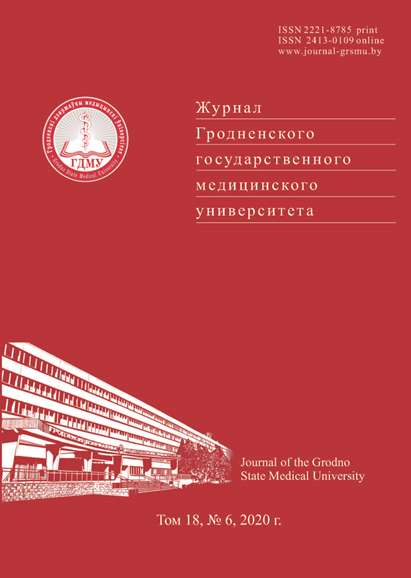АТФ-СИНТАЗА МИТОХОНДРИЙ
Аннотация
В настоящем обзоре собраны и проанализированы имеющиеся на сегодняшний день данные о строении и организации, расположении, механизмах работы и функциях универсального в живой природе и уникального по своим характеристикам фермента синтеза АТФ – АТФ-синтазы. Ассоциированная в димеры АТФ-синтаза митохондрий, кроме синтазной и гидролазной активности, «изгибает» внутреннюю мембрану этих органелл. С нарушениями АТФ-синтазы ассоциировано большое количество заболеваний, в том числе нейродегенеративных и митохондриальных, которые, кроме прочего, сопровождаются изменениями структуры крист митохондрий.
Литература
Schapira AH. Mitochondrial disease. Lancet. 2006;368(9529):70-82. http://doi.org/10.1016/S0140-6736(06)68970-8.
International Union of Biochemistry and Molecular biology. Recommendations on Biochemical & Organic Nomenclature, Symbols & Terminology etc. [Internet]. Available from: https://www.qmul.ac.uk/sbcs/iubmb
Nannenga BL, Gonen T. Protein tructure determination by MicroED. Curr Opin Struct Biol.2014;27:24-31. http://doi.org/10.1016/j.sbi.2014.03.004.
Devenish RJ, Prescott M, Rodgers AJ. The structure and function of mitochondrial F1F0-ATP synthases. Int Rev Cell Mol Biol. 2008;267:1-58. http://doi.org/10.1016/S1937-6448(08)00601-1.
Walker JE, Dickson VK. The peripheral stalk of the mitochondrial ATP synthase. Biochim Biophys Acta. 2006;1757(5-6):286-96. http://doi.org/10.1016/j.bbabio.2006.01.001.
Watt IN, Montgomery MG, Runswick MJ, Leslie AG, Walker JE. Bioenergetic cost of making an adenosine triphosphate molecule in animal mitochondria. PNAS. 2010;107(39):16823-16827. http://doi.org/10.1073/pnas.1011099107.
Xu T, Pagadala V, Mueller DM. Understanding structure, function, and mutations in the mitochondrial ATP synthase. Microb Cell. 2015;2(4):105-125. http://doi.org/10.15698/mic2015.04.197.
Zhou A, Rohou A, Schep DG, Bason JV, Montgomery MG, Walker JE, Grigorieff N, Rubinstein JL. Structure and conformational states of the bovine mitochondrial ATP synthase by cryo-EM. Elife. 2015;4:e10180. http://doi.org/10.7554/eLife.10180.
Pecina P, Nusková H, Karbanová V, Kaplanová V, Mráček T, Houštěk J. Role of the mitochondrial ATP synthase central stalk subunits γ and δ in the activity and assembly of the mammalian enzyme. Biochim Biophys Acta Bioenerg. 2018;1859(5):374-381. http://doi.org/10.1016/j.bbabio.2018.02.007.
Strauss M, Hofhaus G, Schröder RR, Kühlbrandt W. Dimer ribbons of ATP synthase shape the inner mitochondrial membrane. EMBO J. 2008;27(7):1154-1160. http://doi.org/10.1038/emboj.2008.35.
Pogoryelov D, Yildiz O, Faraldo-Gómez JD, Meier T. High-resolution structure of the rotor ring of a proton-dependent ATP synthase. Nat Struct Mol Biol. 2009;16(10):1068-1073. http://doi.org/10.1038/nsmb.1678.
Devenish RJ, Prescott M, Boyle GM, Nagley P. The oligomycin axis of mitochondrial ATP synthase: OSCP and the proton channel. J Bioenerg Biomembr. 2000;32(5):507- 515. http://doi.org/10.1023/a:1005621125812.
Blum TB, Hahn A, Meier T, Davies KM, Kühlbrandt W. Dimer of mitochondrial ATP synthase induce membrane curvature and self-assemble into rows. PNAS. 2019;116(10):4250-4255. http://doi.org/10.1073/pnas.1816556116.
Capaldi RA, Aggeler R. Mechanism of the F1F0-type ATP synthase, a biological rotary motor. Trends Biochem Sci. 2002;27(3):154-160. http://doi.org/10.1016/s0968-0004(01)02051-5.
Boyer PD. A model for conformational coupling of membrane potential and proton translocation to ATP synthesis and to active transport. FEBS Lett. 1975;58(1):1-6. http://doi.org/10.1016/0014-5793(75)80212-2.
Boyer PD. The binding change mechanism for ATP synthase – some probabilities and possibilities. Biochim Biophys Acta. 1993;1140(3):215-250. http://doi.org/10.1016/0005-2728(93)90063-l.
Campanella M, Casswell E, Chong S, Farah Z, Wieckowski MR, Abramov AY, Tinker A, Duchen MR. Regulation of mitochondrial structure and function by the F1Fo-ATPase inhibitor protein, IF1. Cell Metab. 2008;8(1):13-25. http://doi.org/10.1016/j.cmet.2008.06.001.
Boyer PD, Kohlbrenner WE. The present status of the binding-change mechanism and its relation to ATP formation by chloroplasts. In: Selman BR, Selman-Reimer S, editors. Energy Coupling in Photosynthesis. New York: Elsevier; 1981. p. 231-240.
Takahashi A, Adachi K, Noji H, Yasuda R, Yoshida M, Kinosita K. Mechanically driven ATP synthesis by F1-ATPase. Nature. 2004;427(6973):465-468. http://doi.org/10.1038/nature02212.
Kinosita KJr, Yasuda R, Noji H. F1-ATPase: a highly efficient rotary ATP machine. Essays Biochem. 2000;35:3-18. http://doi.org/10.1042/bse0350003.
Pullman ME, Monroy GC. A Naturally Occurring Inhibitor of Mitochondrial Adenosine Triphosphatase. J. Biol. Chem. 1963;238:3762-3769.
Van Heeke G, Deforce L, Schnizer RA, Shaw R, Couton JM, Shaw G, Song PS, Schuster SM. Recombinant bovine heart mitochondrial F1-ATPase inhibitor protein: overproduction in Escherichia coli, purification and structural studies. Biochemistry. 1993;32(38):10140-10149. http://doi.org/10.1021/bi00089a033.
Campanella M, Parker N, Tan CH, Hall AM, Duchen MR. IF1: setting the pace of the F1FO-ATP synthase. Trends Biochem Sci. 2009;34(7):343-350. http://doi.org/10.1016/j.tibs.2009.03.006.
Nicholls DG. The hunt for the molecular mechanism of brown fat thermogenesis. Biochimie. 2017;134:9-18. http://doi.org/10.1016/j.biochi.2016.09.003.
Crichton PG, Lee Y, Kunji ER. The molecular features of uncoupling protein 1 support a conventional mitochondrial carrier-like mechanism. Biochimie. 2017;134:35-50. http://doi.org/10.1016/j.biochi.2016.12.016.
La Noue KF, Strzelecki T, Strzelecka D, Koch C. Regulation of the uncoupling protein in brown adipose tissue. J Biol Chem. 1986;261(1):298-305.
Davies KM, Anselmi C, Wittig I, Faraldo-Gómez JD, Kühlbrandt W. Structure of the yeast F1Fo-ATP synthase dimer and its role in shaping the mitochondrial cristae. PNAS. 2012;109(34):13602-13607. http://doi.org/10.1073/pnas.1204593109.
Paumard P, Vaillier J, Coulary B, Schaeffer J, Soubannier V, Mueller DM, Brèthes D, di Rago JP, Velours J. The ATP synthase is involved in generating mitochondrial cristae morphology. EMBO J. 2002;21(3):221-230. http://doi.org/10.1093/emboj/21.3.221.
Davies KM, Strauss M, Daum B, Kief JH, Osiewacz HD, Rycovska A, Zickermann V, Kühlbrandt W. Macromolecular organization of ATP synthase and complex I in whole mitochondria. PNAS. 2011;108(34):14121- 14126. http://doi.org/10.1073/pnas.1103621108.
Hahn A, Parey K, Bublitz M, Mills DJ, Zickermann V, Vonck J, Kühlbrandt W, Meier T. Structure of a Complete ATP Synthase Dimer Reveals the Molecular Basis of Inner Mitochondrial Membrane Morphology. Mol Cell. 2016;63(3):445-456. http://doi.org/10.1016/j.molcel.2016.05.037.
Minauro-Sanmiguel F, Wilkens S, Garcia JJ. Structure of dimeric mitochondrial ATP synthase: novel F0 bridging features and the structural basis of mitochondrial cristae biogenesis. PNAS. 2005;102(35):12356-12358. http://doi.org/10.1073/pnas.0503893102.
Formentini L, Pereira MP, Sánchez-Cenizo L, Santacatterina F, Lucas JJ, Navarro C, Martínez-Serrano A, Cuezva JM. In vivo inhibition of the mitochondrial H+-ATP synthase in neurons promotes metabolic preconditioning. EMBO J. 2014;33(7):762-778. http://doi.org/10.1002/embj.201386392.
Garcia-Bermudez J, Cuezva Garcia-Bermudez JM. The ATPase Inhibitory Factor 1 (IF1): A master regulator of energy metabolism and of cell survival. Biochim Biophys Acta. 2016;1857(8):1167-1182. http://doi.org/10.1016/j.bbabio.2016.02.004.
Ahmad Z, Laughlin TF. Medicinal chemistry of ATP synthase: a potential drug target of dietary polyphenols and amphibian antimicrobial peptides. Curr Med Chem. 2010;17(25):2822-2836. http://doi.org/10.2174/092986710791859270.
Bartolome F, Wu HC, Burchell VS, Preza E, Wray S, Mahoney CJ, Fox NC, Calvo A, Canosa A, Moglia C, Mandrioli J, Chiò A, Orrell RW, Houlden H, Hardy J, Abramov AY, Plun-Favreau H. Pathogenic VCP Mutations Induce Mitochondrial Uncoupling and Reduced ATP Levels. Neuron. 2013;78(1):57-64. http://doi.org/10.1016/j.neuron.2013.02.028.
García JJ, Ogilvie I, Robinson BH, Capaldi RA. Structure, functioning, and assembly of the ATP synthase in cells from patients with the T8993G mitochondrial DNA mutation. Comparison with the enzyme in Rho(0) cells completely lacking mtdna. J Biol Chem. 2000;275(15):11075-11081. http://doi.org/10.1074/jbc.275.15.11075.
Dautant A, Meier T, Hahn A, Tribouillard-Tanvier D, di Rago J.P. Kucharczyk R. ATP Synthase Diseases of Mitochondrial Genetic Origin. Front Physiol. 2018;9:329. http://doi.org/10.3389/fphys.2018.00329.
Kucharczyk R, Zick M, Bietenhader M, Rak M, Couplan E, Blondel M, Caubet SD, di Rago JP. Mitochondrial ATP synthase disorders: molecular mechanisms and the quest for curative therapeutic approaches. Biochim Biophys Acta. 2009;1793(1):186-199. http://doi.org/10.1016/j.bbamcr.2008.06.012.
Ahmad Z, Okafor F, Azim S, Laughlin TF. ATP Synthase: A Molecular Therapeutic Drug Target for Antimicrobial and Antitumor Peptides. Curr Med. Chem. 2013;20(15):1956-1973. http://doi.org/10.2174/0929867311320150003.
Hong S, Pedersen PL. ATP synthase and the actions of inhibitors utilized to study its roles in human health, disease and other scientific areas. Microbiol Mol Biol Rev. 2008;72(4):590-641. http://doi.org/10.1128/MMBR.00016-08.
Federico A, Cardaioli E, Da Pozzo P, Formichi P, Gallus GN, Radi E. Mitochondria, oxidative stress and neurodegeneration. J Neurol Sci. 2012;322(1-2):254-262. http://doi.org/10.1016/j.jns.2012.05.030.
e HR. The biochemical basis of mitochondrial diseases. J Bioenerg Biomembr. 1988;20(2):161-191. http://doi.org/10.1007/BF00768393.
Filosto M, Scarpelli M, Cotelli MS, Vielmi V, Todeschini A, Gregorelli V, Tonin P, Tomelleri G, Padovani A. The role of mitochondria in neurodegenerative diseases. J Neurol. 2011;258(10):1763-1764. http://doi.org/10.1007/s00415-011-6104-z.
Magistretti PJ, Pellerin L. Cellular mechanisms of brain energy metabolism. Relevance to functional brain imaging and to neurodegenerative disorders. Ann N Y Acad Sci. 1996;777(1):380-387. http://doi.or/10.1111/j.1749-6632.1996.tb34449.x.
Terni B, Boada J, Portero-Otin M, Pamplona R, Ferrer I. Mitochondrial ATP-Synthase in the Entorhinal Cortex Is a Target of Oxidative Stress as Stages I/II of Alzheimer’s Disease Pathology. Brain Pathol. 2010;20(1):222-233. http://doi.org/10.1111/j.1750-3639.2009.00266.x.
Reed T, Perluigi M, Sultana R, Pierce WM, Klein JB, Turner DM, Coccia R, Markesbery WR, Butterfield DA. Redox proteomic identification of 4-hydroxy-2-nonenal-modified brain proteins in amnestic mild-cognitive impairment: insight into the role of lipid peroxidation in the progression and pathogenesis of Alzheimer’s disease. Neurobiol Dis. 2008;30(1):107-120. http://doi.org/10.1016/j.nbd.2007.12.007.
Emelyanchik SV, Karnyushko OA, Zimatkin SM. Izmenenija immunoreaktivnosti ATF-sintazy v nejronah kory mozga i mozzhechka krys pri holestaze [Changes in the immunoreactivity of ATP-synthase in neurons of cerebral cortex and cerebellum of rats with cholestasis]. Vestnik Smolenskoy Gosudarstvennoy Medicinskoy Academii [Vestnik of the Smolensk State Medical Academy]. 2018;17(2):55-60. (Russian).
Lopez-Campistrous A, Hao L, Xiang W, Ton D, Semchuk P, Sander J, Ellison MJ, Fernandez-Patron C. Mitochondrial dysfunction in the hypertensive rat brain: respiratory complexes exhibit assembly defects in hypertension. Hypertension. 2008;51(2):412-419. http://doi.org/10.1161/HYPERTENSIONAHA.107.102285.































